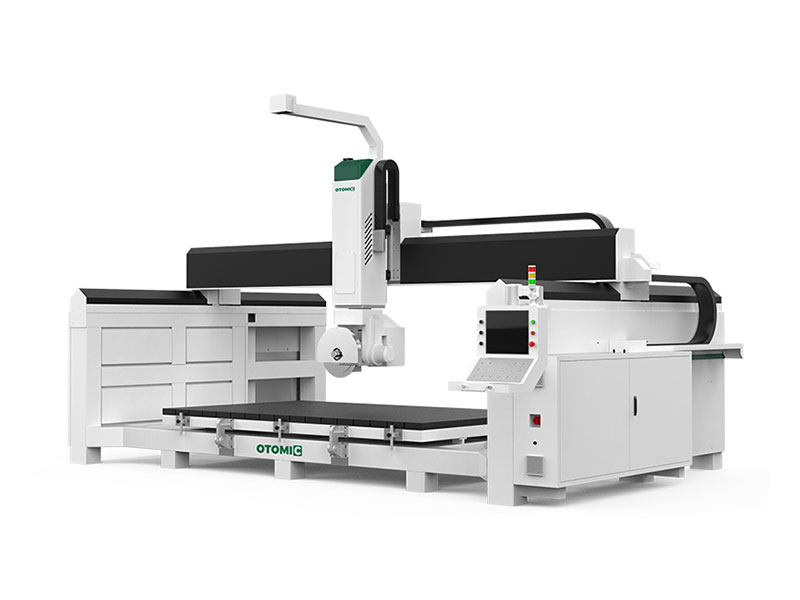Five-axis CNC bridge saws are advanced machines used in the fabrication industry for cutting and shaping materials with exceptional precision and versatility. These saws are equipped with five axes of movement, allowing them to execute complex cuts and intricate designs that were previously challenging or impossible to achieve using traditional methods.
The Defination of 5-Axis CNC Bridge Saws:
The five axes of movement in a five-axis CNC bridge saw include:
X-axis (longitudinal): Controls the movement of the saw blade along the length of the material.
Y-axis (lateral): Controls the movement of the saw blade across the width of the material.
Z-axis (vertical): Controls the movement of the saw blade up and down, determining the depth of the cut.
A-axis (tilt): Controls the tilting angle of the saw blade, allowing for angled cuts.
C-axis (rotation): Controls the rotation of the workpiece, enabling the creation of curved or contoured cuts.
The Main Functions of 5-Axis CNC Bridge Saws:
The combination of these five axes allows five-axis CNC bridge saws to perform a wide range of operations, including:
- Straight cuts
- Bevel cuts
- Miter cuts
- Compound cuts
- Curved cuts
- 3D contouring




These saws are commonly used in various industries, including metalworking, woodworking, and plastic fabrication, for creating complex parts and components with high accuracy and efficiency.

